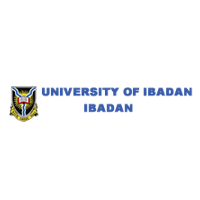Below is a summary of the abstract you submitted. Presenting author(s) is shown in bold.
If any changes need to be made, you can modify the abstract or change the authors.
You can also download a .docx version of this abstract.
If there are any problems, please email Dan at dar78@pitt.edu and he'll take care of them!
This abstract was last modified on April 6, 2021 at 2:21 p.m..

We report the manual annotation of microbacterium bacteriophage Dothraki (accession number: MT451985), originally isolated by Mount Saint Mary College in the year 2018. The bacteriophage isolated on Microbacterium foliorum NRRL B-24224 host has circularly permuted genome ends, with approximate shotgun coverage of 2533. It has a genome length of 41809 base pairs and a G+C content of 63.6% (https://phagesdb.org/phages/Dothraki/). Whole-genome sequence alignment carried out on NCBI-BLASTn (https://blast.ncbi.nlm.nih.gov/BlastAlign.cgi) and phagesdb.org (https://phagesdb.org/blast/) revealed 100% nucleotide sequence identity with lytic microbacterium phages belonging to cluster EA and subcluster EA1. Notable genome similarities include Stanktossa (accession number: MN062709), Kurt1 (accession number: MT553341), and Pherferi (accession number: MT310866). This was visually depicted using Blast Ring Image Generator (BRIG) and Artemis Comparison Tool. Genome structural organization through Phamerator revealed very close gene synteny amongst the subcluster EA1 members. Auto annotation of the genome was carried out using Glimmer and GeneMark in-built predictors in DNA Master and RAST server (https://rast.nmpdr.org/), both predicted 64 protein-coding features. No tRNA genes were identified by ARAGORN (http://www.ansikte.se/ARAGORN/) and tRNAscan-SE (http://lowelab.ucsc.edu/tRNAscan-SE/). The genome sequence was visually inspected using both DNA Master and Artemis, while manual inspection for start site refinement was carried out using DNA Master, Starterator, and Phamerator. Putative functional assignment was done using NCBI BLASTp, HHPred, and UniProt. The genome structural organization comprises 44% forward transcribed genes and 56% reverse-transcribed genes, out of the 63 manually validated protein-coding features. Forty-one percent of the protein-coding features were assigned putative functions. Some of the protein functions assigned to forward transcribed genes include virion structural and assembly proteins, and lytic cycle proteins Lysin A and Holin. The reverse-transcribed genes on the other hand account for 42% of assigned putative functions, comprising of DNA Recombinase, Nuclease, DNA helicase, Thymidylate Kinase, Phosphodiesterase, Glycosyltransferase, MazG- like Nucleotide Pyrophosphohydrolase, and Membrane Proteins.
